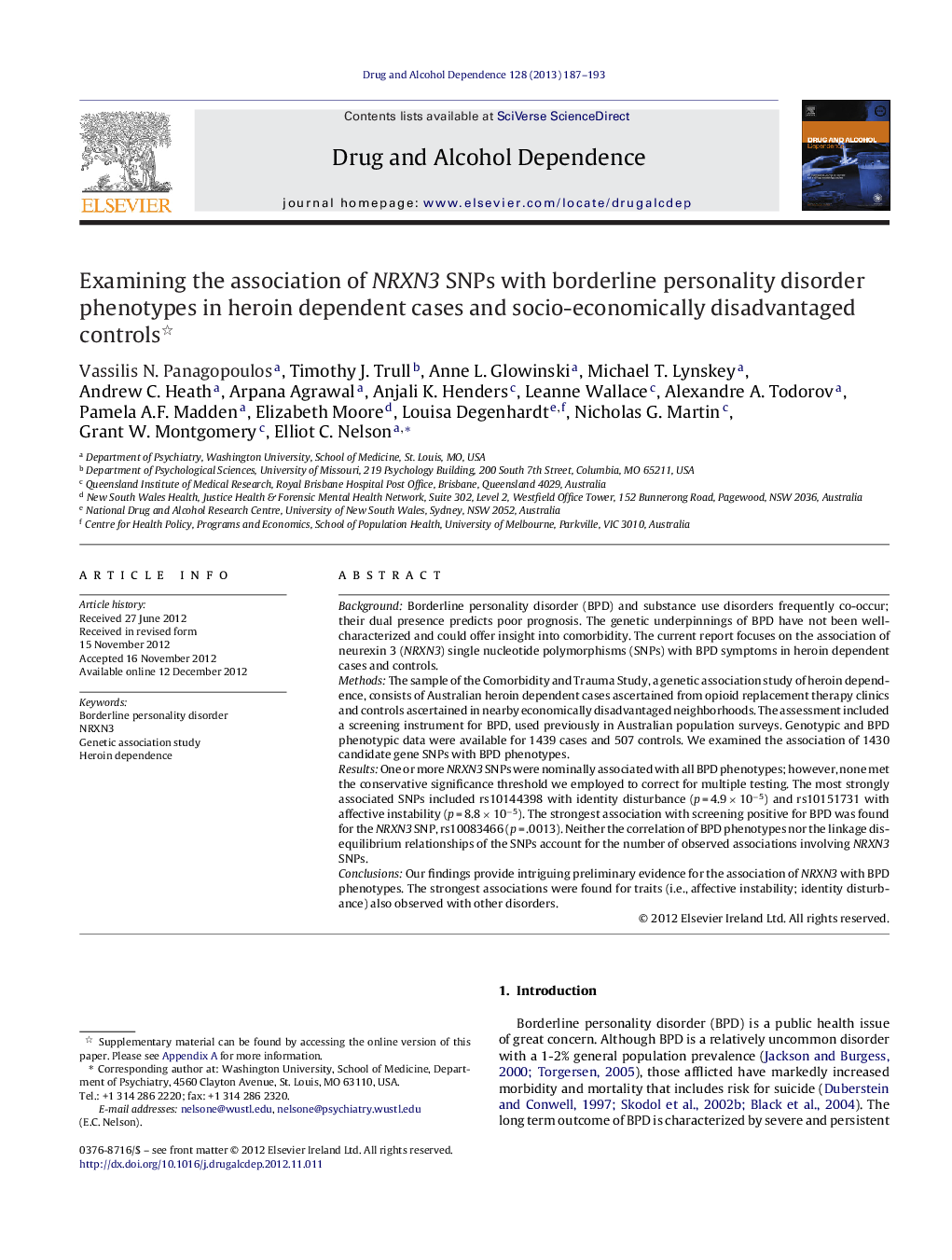| کد مقاله | کد نشریه | سال انتشار | مقاله انگلیسی | نسخه تمام متن |
|---|---|---|---|---|
| 1069960 | 949318 | 2013 | 7 صفحه PDF | دانلود رایگان |

BackgroundBorderline personality disorder (BPD) and substance use disorders frequently co-occur; their dual presence predicts poor prognosis. The genetic underpinnings of BPD have not been well-characterized and could offer insight into comorbidity. The current report focuses on the association of neurexin 3 (NRXN3) single nucleotide polymorphisms (SNPs) with BPD symptoms in heroin dependent cases and controls.MethodsThe sample of the Comorbidity and Trauma Study, a genetic association study of heroin dependence, consists of Australian heroin dependent cases ascertained from opioid replacement therapy clinics and controls ascertained in nearby economically disadvantaged neighborhoods. The assessment included a screening instrument for BPD, used previously in Australian population surveys. Genotypic and BPD phenotypic data were available for 1439 cases and 507 controls. We examined the association of 1430 candidate gene SNPs with BPD phenotypes.ResultsOne or more NRXN3 SNPs were nominally associated with all BPD phenotypes; however, none met the conservative significance threshold we employed to correct for multiple testing. The most strongly associated SNPs included rs10144398 with identity disturbance (p = 4.9 × 10−5) and rs10151731 with affective instability (p = 8.8 × 10−5). The strongest association with screening positive for BPD was found for the NRXN3 SNP, rs10083466 (p = .0013). Neither the correlation of BPD phenotypes nor the linkage disequilibrium relationships of the SNPs account for the number of observed associations involving NRXN3 SNPs.ConclusionsOur findings provide intriguing preliminary evidence for the association of NRXN3 with BPD phenotypes. The strongest associations were found for traits (i.e., affective instability; identity disturbance) also observed with other disorders.
Journal: Drug and Alcohol Dependence - Volume 128, Issue 3, 1 March 2013, Pages 187–193